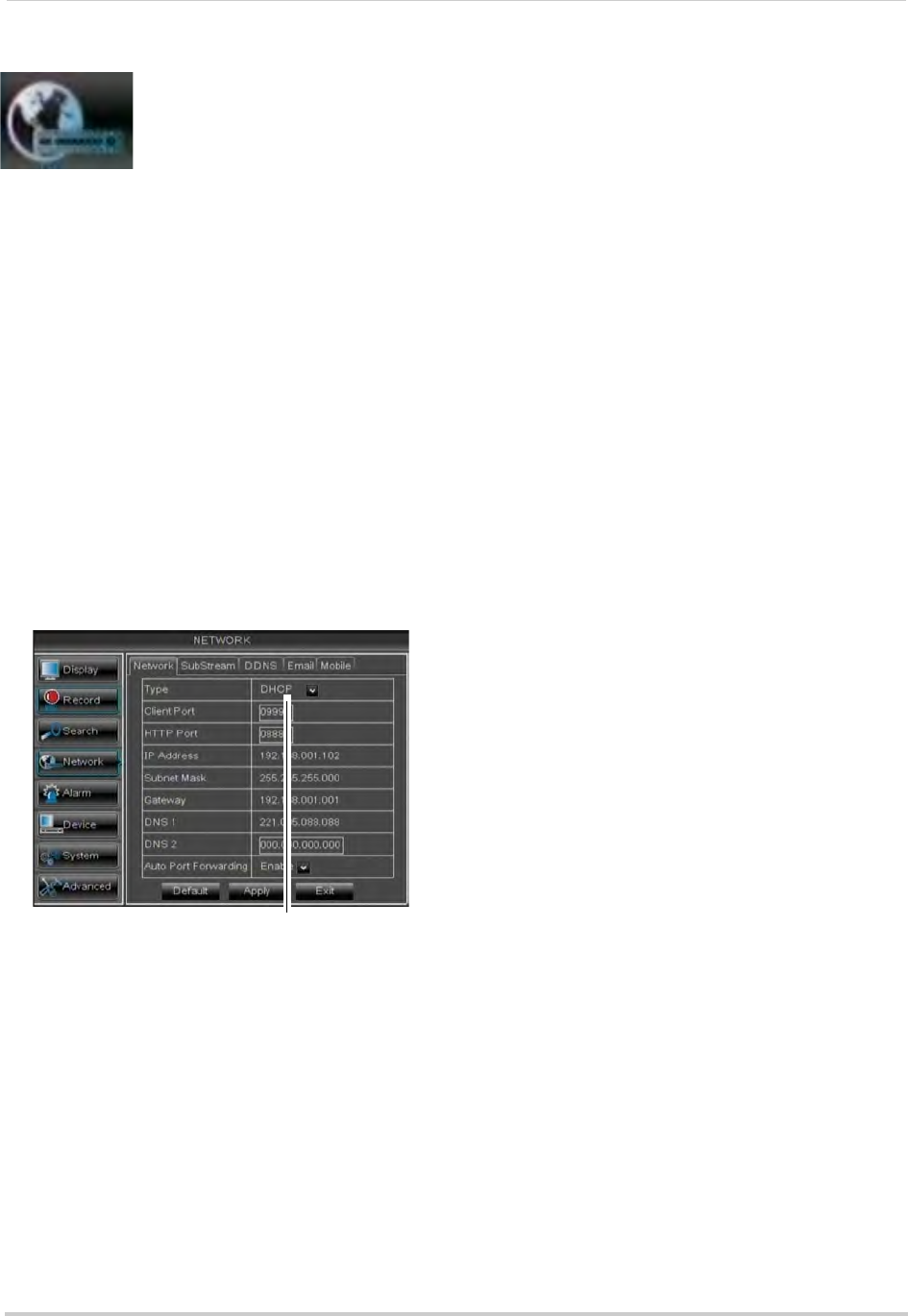
45
Using the Main Menu
Network
The Network menu allows
you to configure the
system’s DDNS and
network settings.
Configuring Network Type: DHCP &
Static IP
The system has the ability to operate in
DHCP mode and Static IP mode.
DHCP allows the router to assign an IP
t
o
the DVR. Static IP mode fixes the IP of
the DVR. Fixing an IP of the DVR
ensures that the IP will not change.
To configure DHCP and Static IP
settings:
1 Sel
ect the Ne
twork tab.
2 In the Typ
e drop-down menu, select DHCP
or Static. If you select DHCP, the router
automatically assigns an IP to your DVR.
If you select Static, click the field beside IP
Addres
s, and enter in the IP address of
your choice.
• Enter your custom Subn
et Mask,
Gateway, DNS1 and DNS2 using the
mouse.
• You must assign the IP in your router that
you wish
to make static. For example, if
you assign 192.168.2.89 as the static IP in
the DVR, you must assign 192.168.2.89 in
your router as a static IP as well. Consult
your router’s user’s manual for details.
3 Click Apply
to save your settings.
4 Right-click until you
exit all menus. You
will be prompted to restart.
Enabling Auto Port Forwarding
Auto Port Forwarding allows the DVR to
open required ports on your router. This
feature only works on certain router
models. If the Auto Port Forwarding
feature does not work on your router, it
is recommended to use the Auto Port
Forwarding Wizard (PC only), located on
the software CD. You may have to
manually open the port on your router.
To Enable Auto Port Forwarding:
1 Sel
ect the Network ta
b.
2 In the Auto P
ort Forwarding drop-down
menu, select Enable or Disable.
3 Click Appl
y
to save your settings.
Changing the DVR’s Client and
HTTP Port
The DVR’s Default Client port is 9000.
The default HTTP port is 80. You must
port forward the Client Port and HTTP
port to your router for remote access.
To change the default Client port and
HT
TP port
:
1 Select the Network ta
b.
